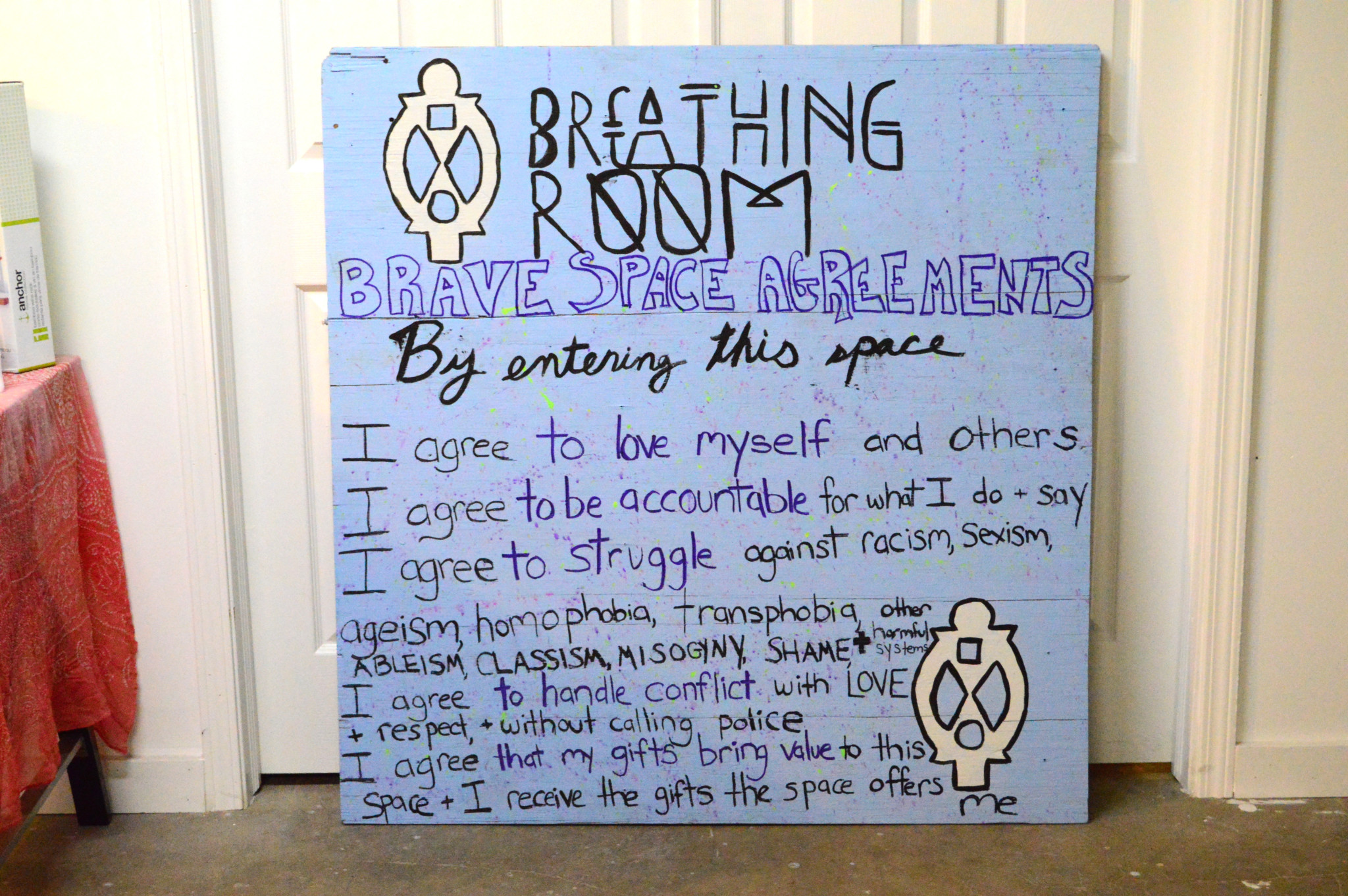We don’t need no cops, we don’t, we don’t need no cops.”
The most memorable aspect of the Breathing Room’s launch party last Monday, January 18, was the chanting. Damon Williams, co-leader of the #LetUsBreathe Collective, would suddenly break into a chant, a song, a rhyme, and everyone in the room would say the phrase back with matching rhythm. I knew exactly which words to say, even when Damon didn’t say them first, and while one could attribute that to the predictable structure of the chants themselves, it felt more like there was a shared energy humming within everyone in the room.
The Breathing Room, a new community space on Cermak Avenue, is the latest project of the #LetUsBreathe collective, an organization that considers itself an incubator for innovative activism and social change. Born out of a 2014 fundraising drive for gas masks and other medical supplies for Ferguson protestors, the collective grew when co-leaders and siblings Kristiana Colón and Williams decided to concentrate their organizing efforts on Chicago. The Breathing Room was established primarily as an interdisciplinary art space where local artists can combine art with activism, but it is also meant to serve as a communal safe space for residents of North Lawndale and beyond.
Xavier Paul, a member of the #LetUsBreathe Vision Team, described the Breathing Room as the manifestation of a desire to become part of the communities and local organizations that they work with. The collective settled on North Lawndale as the location for the space due to their extensive protesting of the acquittal of Dante Servin. Servin is a CPD officer who faced charges for the off-duty shooting at Rekia Boyd, an unarmed twenty-two-year-old who was killed in North Lawndale’s Douglas Park. They also attribute their decision to Martin Luther King, Jr.’s time living and fighting for fair housing in the neighborhood.
“Racist hands around my throat / and I can’t breathe.”
I snapped and whooped during the performances as each performer struck a chord with everyone in the room. I felt mobilized, I felt like a part of the collective, I felt I was breathing when everyone else breathed and chanting when everyone else chanted.
When I first arrived at the Breathing Room, I found a homemade sign that read “Breathing Room!” posted on the wall. Additional signs in the building stairway encouraged me up the four flights to the Breathing Room, where I found a space filled with makeshift items. Pillows and rugs peppered the floor, forming a seating area right in front of the stage, and a hanging curtain separated a lounge area from the performance area.

Throughout the Breathing Room were works of art that reflected the core mission of the collective and the space: there was a communal painting to which everyone added an image over the course of the night; a tie-dyed cloth on which women of color in attendance were instructed to write the name of a woman of color who had been murdered; a wooden board with images of Martin Luther King, Jr.; and documents from King’s time in North Lawndale shortly before his death, including the list of demands he posted to the door of Chicago’s City Hall.
The talks and performances of the night reflected #LetUsBreathe’s dedication to cultivating accessible activism through art and community roots. Among the performers was a representative from Assata’s Daughters, an organization that provides guidance and inspiration to young black girls through art. She spoke passionately and eloquently about the danger of regarding King as a saint, and of minimizing the roles of women and children in protests. Tweak RBG (Radical Black Girl) later performed a poignant rap about the lack of attention paid to black communities in Chicago and the frustration of marginalization.
“Black girls, where your magic at?”
The Breathing Room is the culmination of the collective’s efforts to make activism accessible through art and to create a space to organize, protest and, most importantly, breathe. At first I felt like I had walked into someone else’s home. It may have been the potluck spread, my relation to the performances, or the fact that everyone was constantly rearranging and diving into new conversations with new people, but when I walked out at the end of the night, it was my own.

